Best budget podcasting microphones 2025: Wallet-friendly microphones for budding podcasters
Budget podcast mics for voice and speech situations, including Rode, Audio-Technica, Shure, and more
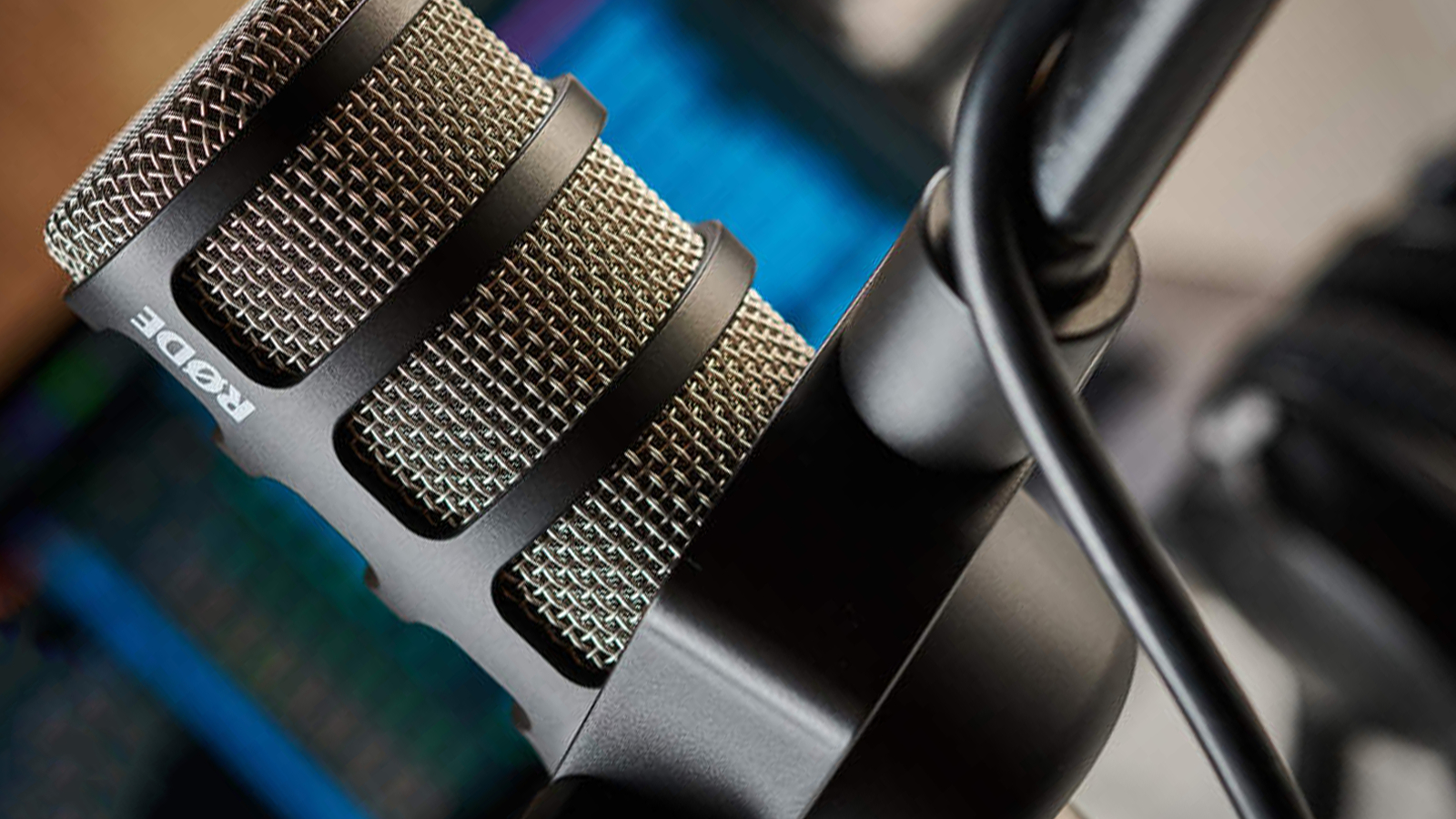
1. Quick list
2. Best beginner
3. Best overall
4. Most portable
5. Best USB & XLR
6. Best XLR
7. Best handheld
8. More options...
9. Buying Advice
10. How we choose
Podcasting has surged in popularity in recent years. Everyone is doing it, from your personal trainer to some of the biggest names in film, TV and music. This boom has caused a huge surge in the microphone world’s biggest names all rushing to get their slice of the pie, with most now offering at least one mic developed specifically for the purposes of podcasting.
Today, the best budget podcasting mics give you everything you need to launch your own podcast, and they don’t require much – or anything – in the way of extra equipment.
In this guide, we’ll explore some of the best budget podcasting microphones. We’ll guide you through the key features, like sound quality, ease of use and compatibility, to help you make an informed decision. From dynamic to condenser and from XLR to USB, we’ll show you what the professionals look for and how to find the perfect mic for your needs and budget.
Quick list
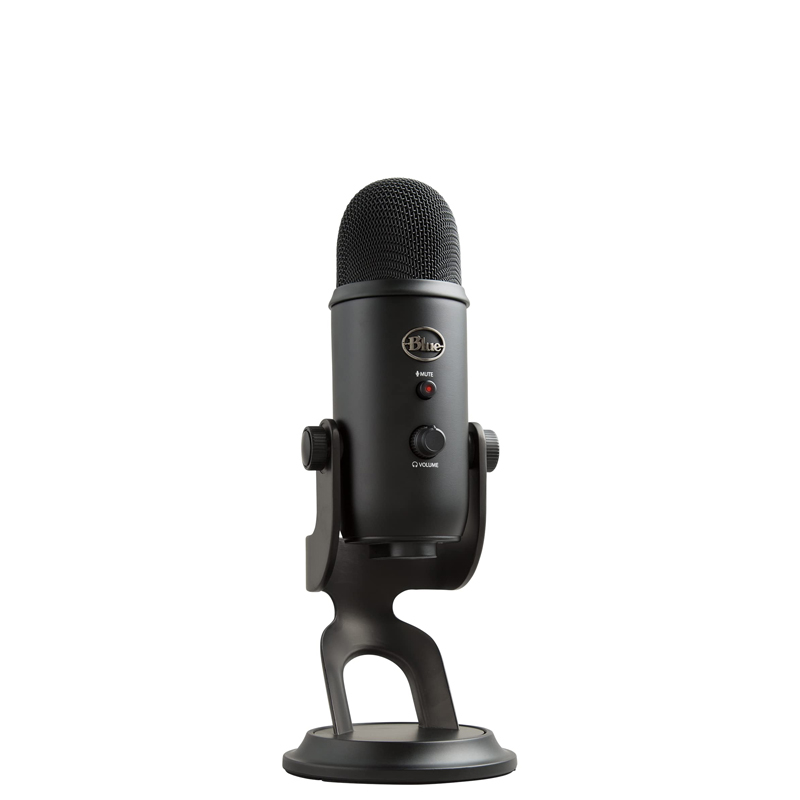
The Blue Yeti is a standout in the USB microphone segment, known for its exceptional tri-capsule technology that offers multiple pattern selection – cardioid, bidirectional, omnidirectional, and stereo. This versatility allows podcasters to record in a variety of settings, including the ability to place it in the middle of a round table and have it pick up everything clearly and cleanly.
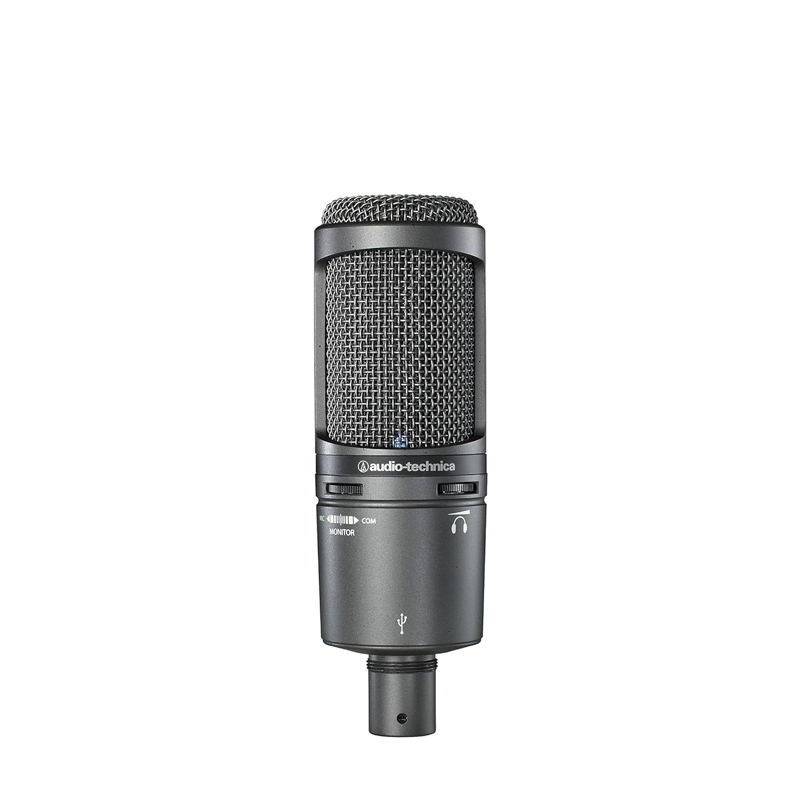
The Audio-Technica AT2020USB+ stands as a testament to what quality and affordability can look like in the realm of podcast microphones. This condenser microphone captures nuanced audio with its extended frequency response, making it perfect for vocal performances, including podcasting and voice-over work.
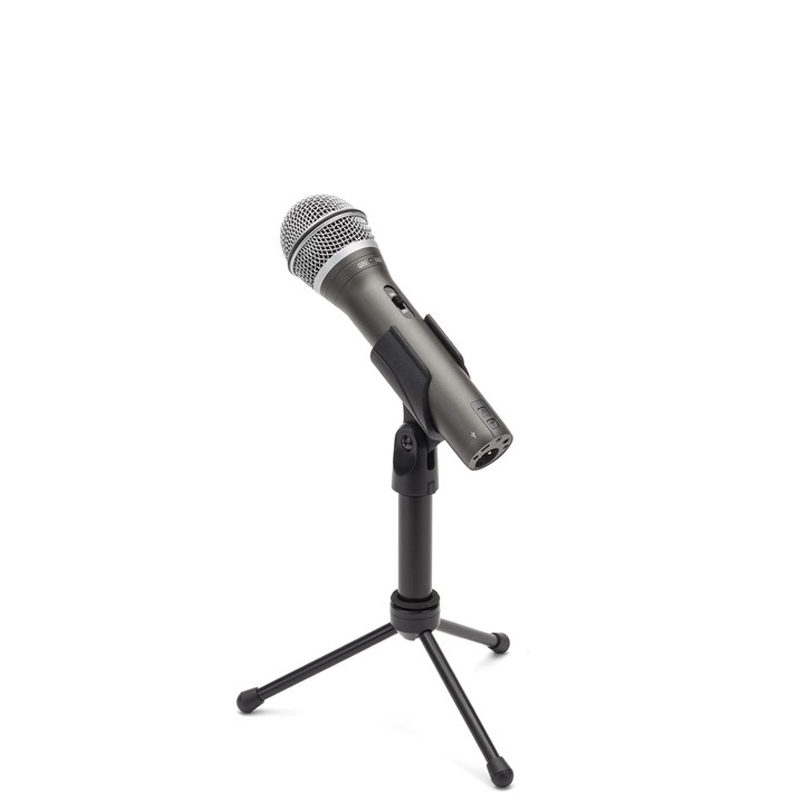
The Samson Q2U combines affordability with versatility, making it an excellent choice for beginner podcasters. It features both USB and XLR connections, providing flexibility for direct computer recording or use with a mixer. The dynamic microphone has a cardioid pickup pattern that excellently isolates the speaker's voice from background noise, while its solid, handheld build is perfect for podcasters who need a durable, portable option.
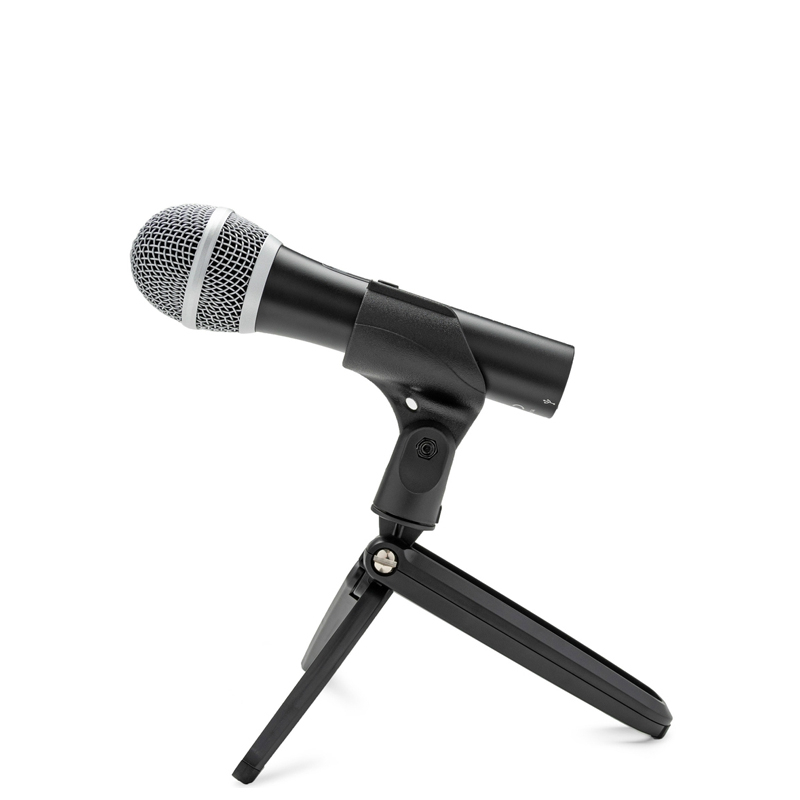
Audio-Technica’s ATR2100x-USB is revered for its robust construction and professional sound quality. This dynamic microphone delivers on both USB and XLR fronts, making it adaptable for various recording set-ups. Its cardioid polar pattern excels at capturing sound directly in front of it, minimizing side and rear noises, which is ideal for podcast environments.
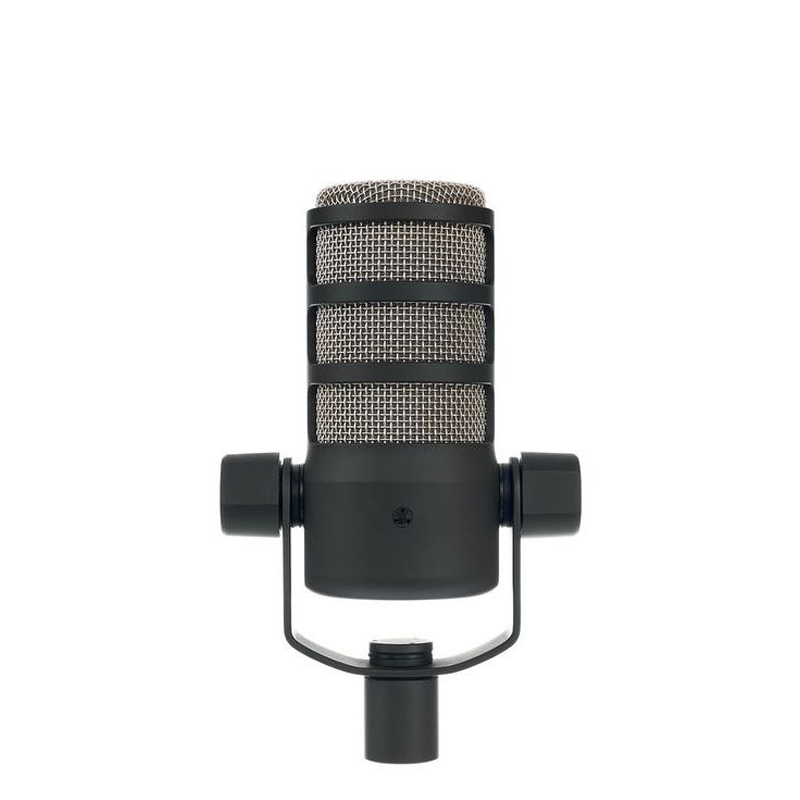
Rode’s PodMic is a dynamic cardioid microphone designed specifically for podcasting. It has a solid brass construction with a matte black finish, ensuring durability and an elegant aesthetic. The PodMic delivers excellent sound quality with a focus on clarity in the vocal range, making it ideal for speech. Its integrated swivel mount allows easy positioning on a boom arm or mic stand, making it a flexible option for any set-up.
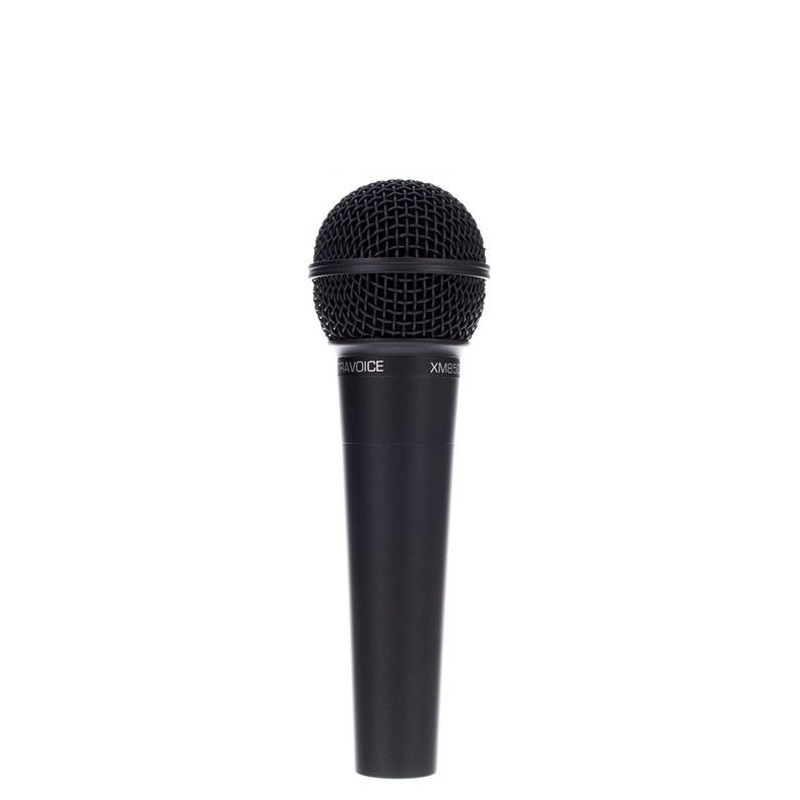
Behringer’s Ultravoice XM8500 is a dynamic microphone that offers excellent sound quality at an incredibly affordable price. Its cardioid pattern effectively rejects off-axis sounds, making it perfect for recording in noisy environments. The microphone’s build quality is impressive, with a rugged metal body and a shock-mount system to reduce handling noise.
Best for beginners
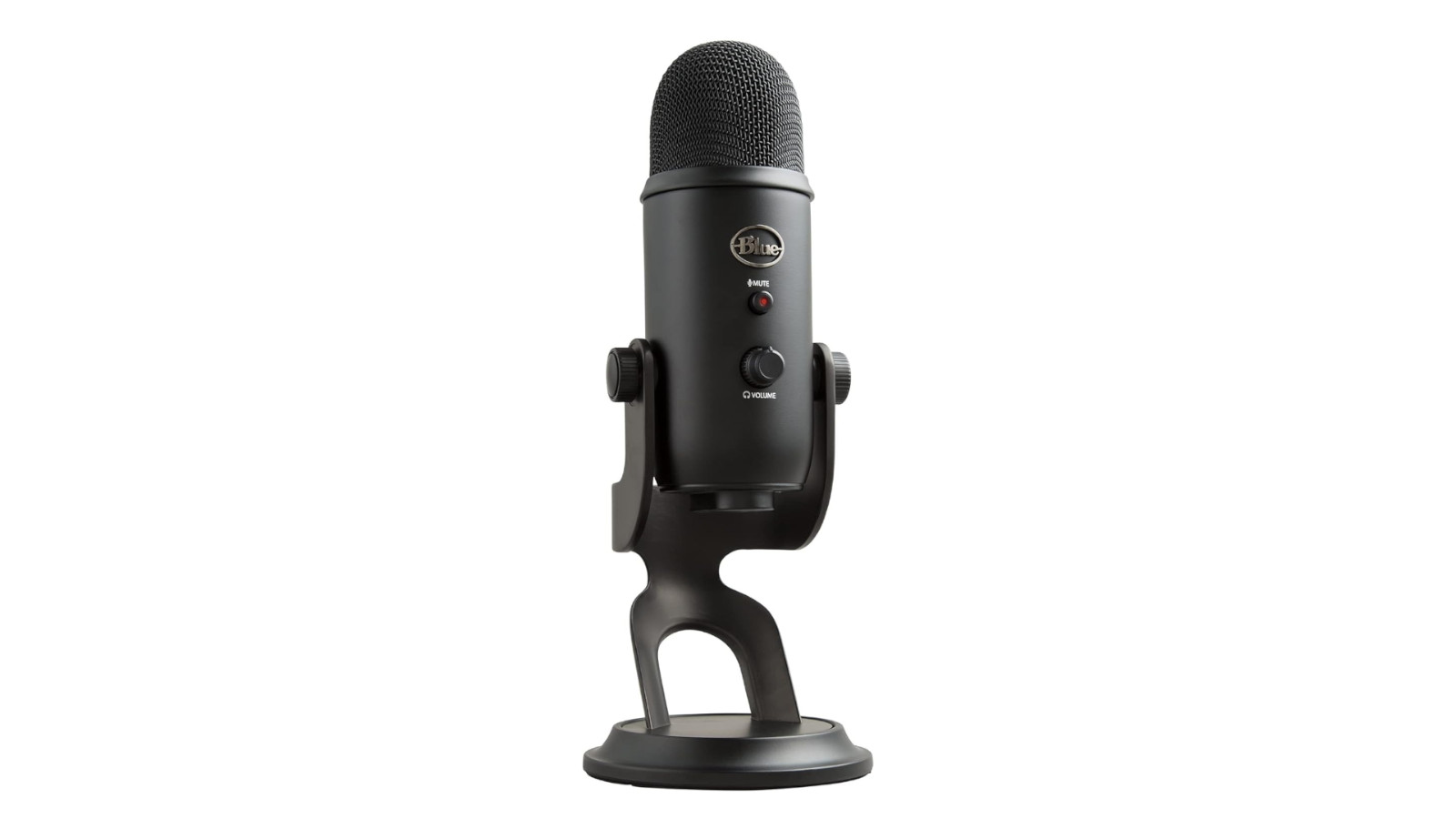
1. Blue Yeti
Our expert review:
Specifications
Reasons to buy
Reasons to avoid
The Blue Yeti is a standout in the USB microphone segment, known for its exceptional tri-capsule technology that offers multiple pattern selection – cardioid, bidirectional, omnidirectional, and stereo. This versatility allows podcasters to record in a variety of settings, including the ability to place it in the middle of a round table and have it pick up everything clearly and cleanly.
The Yeti also features onboard audio controls, including gain control, mute button and zero-latency headphone output, for easy monitoring. The Yeti broke new ground when it was launched, as the first USB microphone to gain mainstream adoption, and it’s easy to see why, even in 2024. Its sturdy, stylish design makes it a durable and attractive addition to any podcast studio.
Read our full Blue Yeti review
Best podcast mic overall
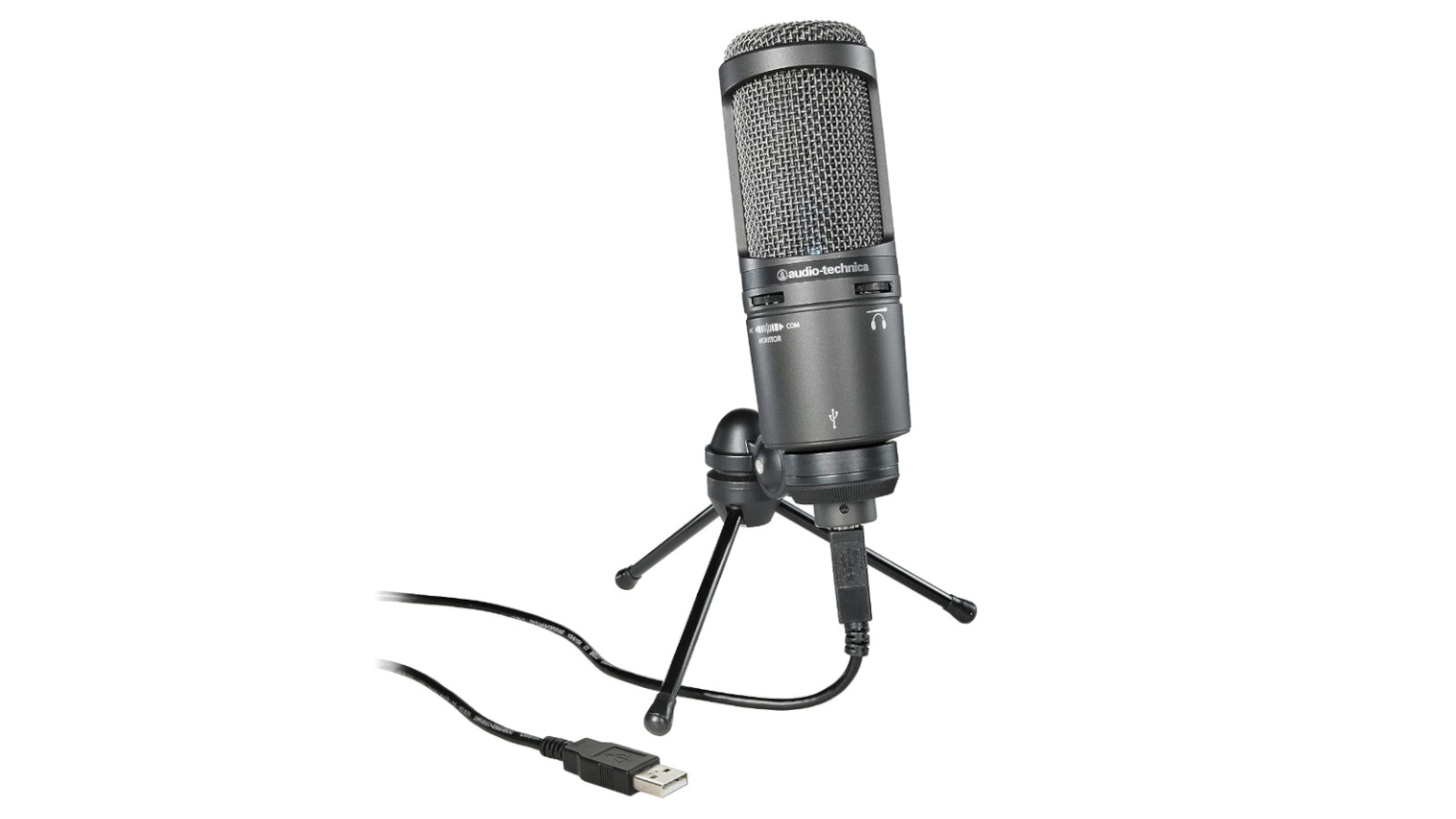
2. Audio-Technica AT2020USB+
Our expert review:
Specifications
Reasons to buy
Reasons to avoid
The Audio-Technica AT2020USB+ stands as a testament to what quality and affordability can look like in the realm of podcast microphones. This condenser microphone captures nuanced audio with its extended frequency response, making it perfect for vocal performances, including podcasting and voice-over work. The cardioid polar pattern is specifically designed to focus audio capture on the sound source directly in front of the mic, ensuring that background noise is kept to a minimum.
One of the standout features of the AT2020USB+ is its internal headphone amplifier, which allows for superior clarity during monitoring, complete with volume control directly on the microphone body. This feature helps podcasters make on-the-fly adjustments without disrupting the recording process. Its USB connectivity enhances its ease of use, enabling straightforward plug-and-play operation with computers, thus eliminating the need for an external audio interface.
Built to last, the microphone comes enclosed in a durable metal construction that can handle the everyday wear and tear of studio or field use. Its sleek design doesn't just add to its aesthetic appeal but also to its functional longevity. For podcasters seeking exceptional sound quality without the complexities of traditional audio set-ups, the Audio-Technica AT2020USB+ provides a perfect balance of performance, convenience and build quality, making it an ideal tool for enhancing your podcast production.
Read our full Audio-Technica AT2020 review
Best for portability
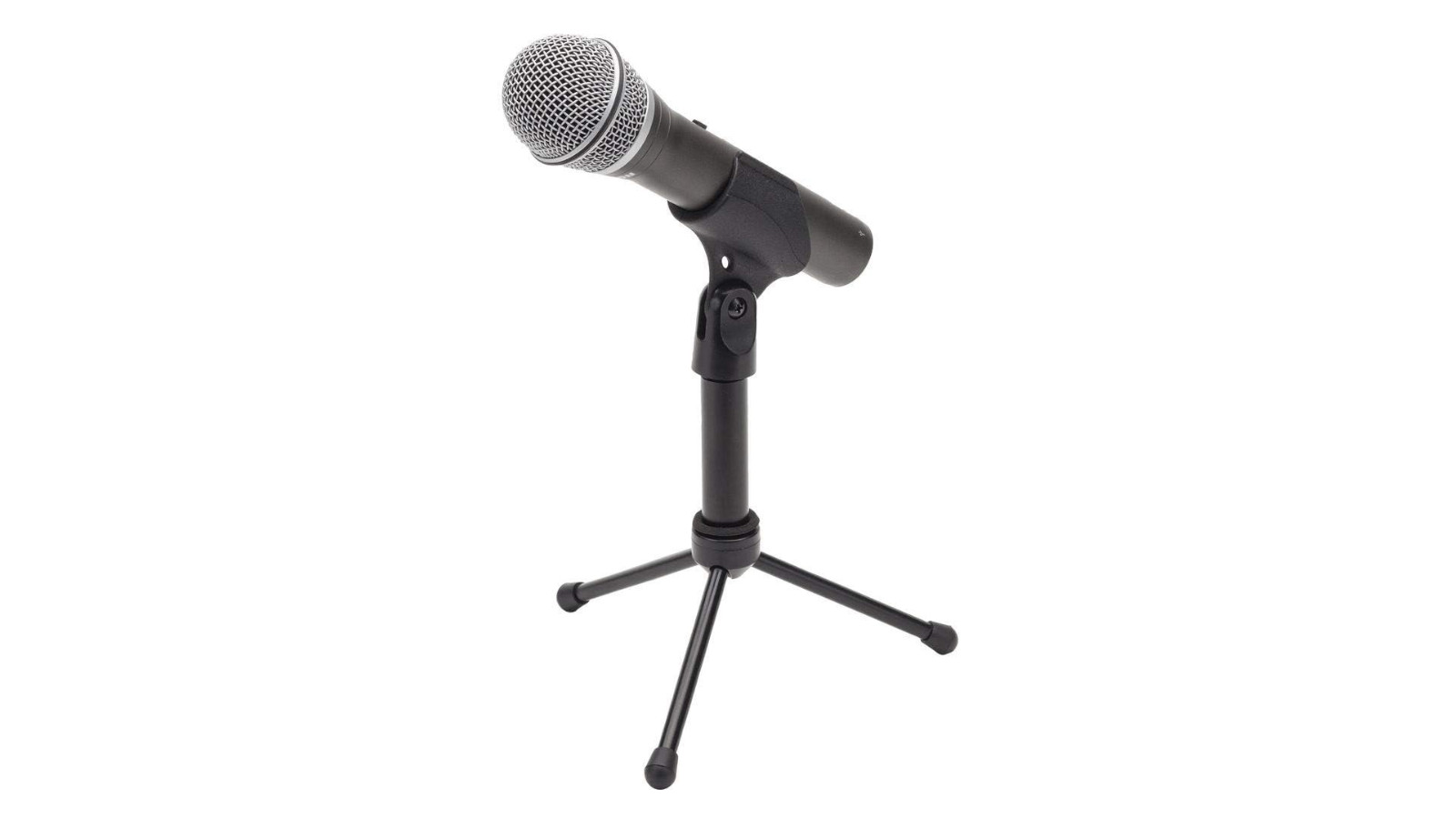
3. Samson Q2U
Our expert review:
Specifications
Reasons to buy
Reasons to avoid
The Samson Q2U combines affordability with versatility, making it an excellent choice for beginner podcasters. It features both USB and XLR connections, providing flexibility for direct computer recording or use with a mixer.
The dynamic microphone has a cardioid pickup pattern that excellently isolates the speaker's voice from background noise, while its solid, handheld build is perfect for podcasters who need a durable, portable option.
The audio quality isn’t sparkling, but is commendable for the price, with a warm, clear tone that enhances spoken words without requiring extensive post-production.
Best USB & XLR
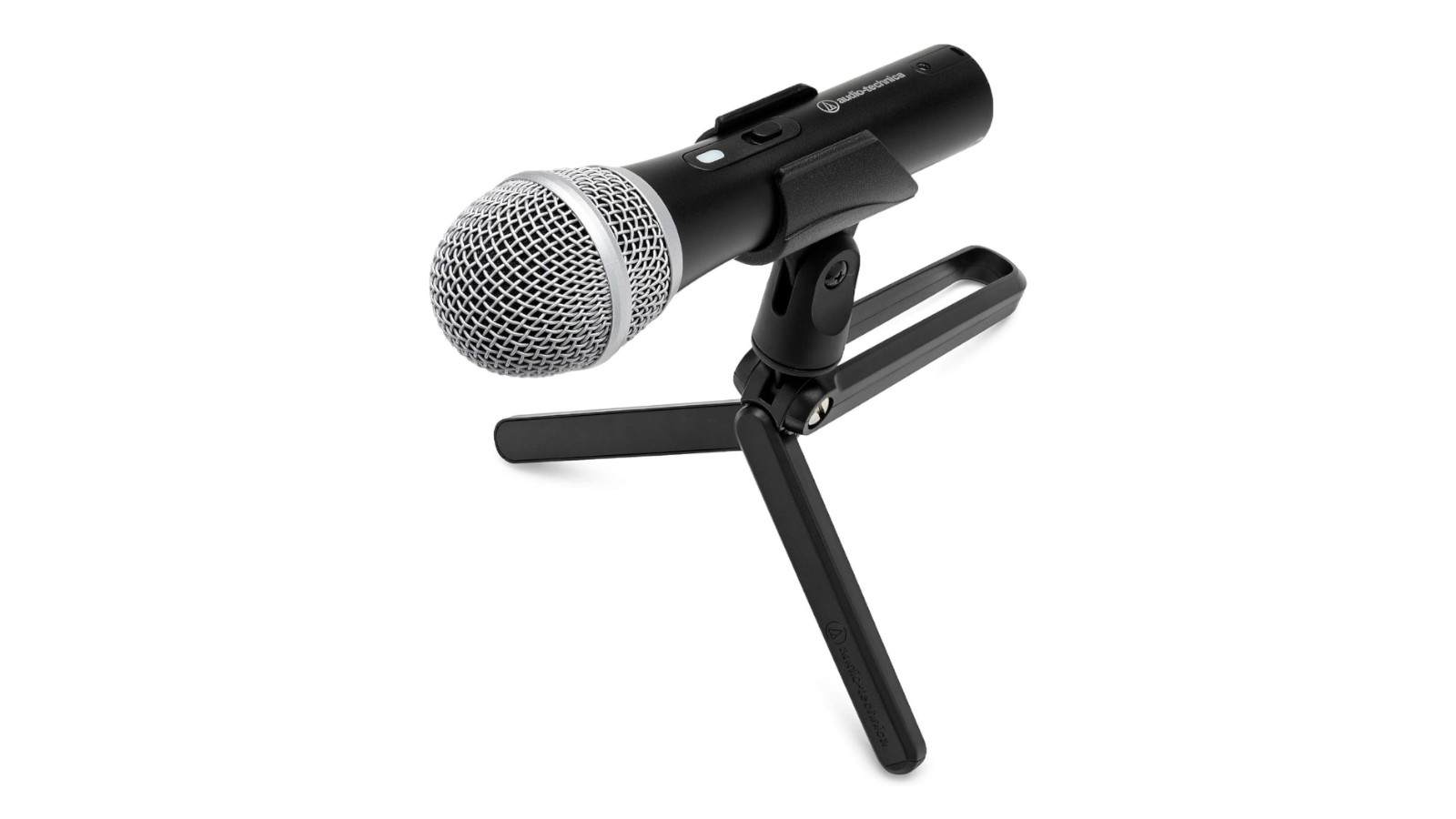
4. Audio-Technica ATR2100x-USB
Our expert review:
Specifications
Reasons to buy
Reasons to avoid
Audio-Technica’s ATR2100x-USB is revered for its robust construction and professional sound quality. This dynamic microphone delivers on both USB and XLR fronts, making it adaptable for various recording set-ups.
Its cardioid polar pattern excels at capturing sound directly in front of it, minimizing side and rear noises, which is ideal for podcast environments.
The microphone also boasts a durable metal construction and includes a tripod desk stand for stable, easy placement, enhancing its portability and usability.
Best XLR option
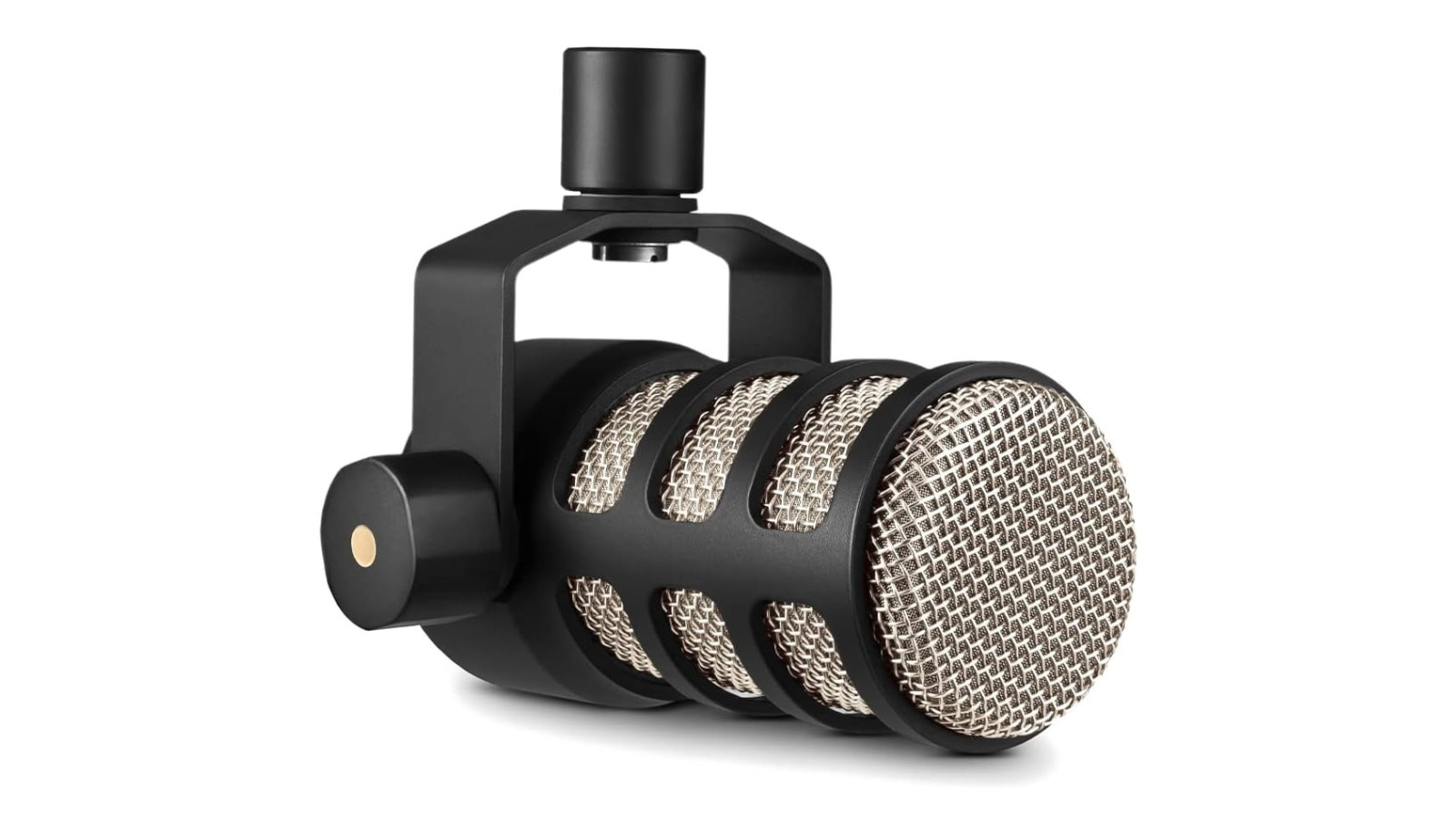
5. Rode PodMic
Our expert review:
Specifications
Reasons to buy
Reasons to avoid
Rode’s PodMic is a dynamic cardioid microphone designed specifically for podcasting. It has a solid brass construction with a matte black finish, ensuring durability and an elegant aesthetic.
The PodMic delivers excellent sound quality with a focus on clarity in the vocal range, making it ideal for speech.
Its integrated swivel mount allows easy positioning on a boom arm or mic stand, making it a flexible option for any set-up. There’s also a USB version available, although not (yet) one that combines the two connection options.
Read our full Rode PodMic review
Best handheld
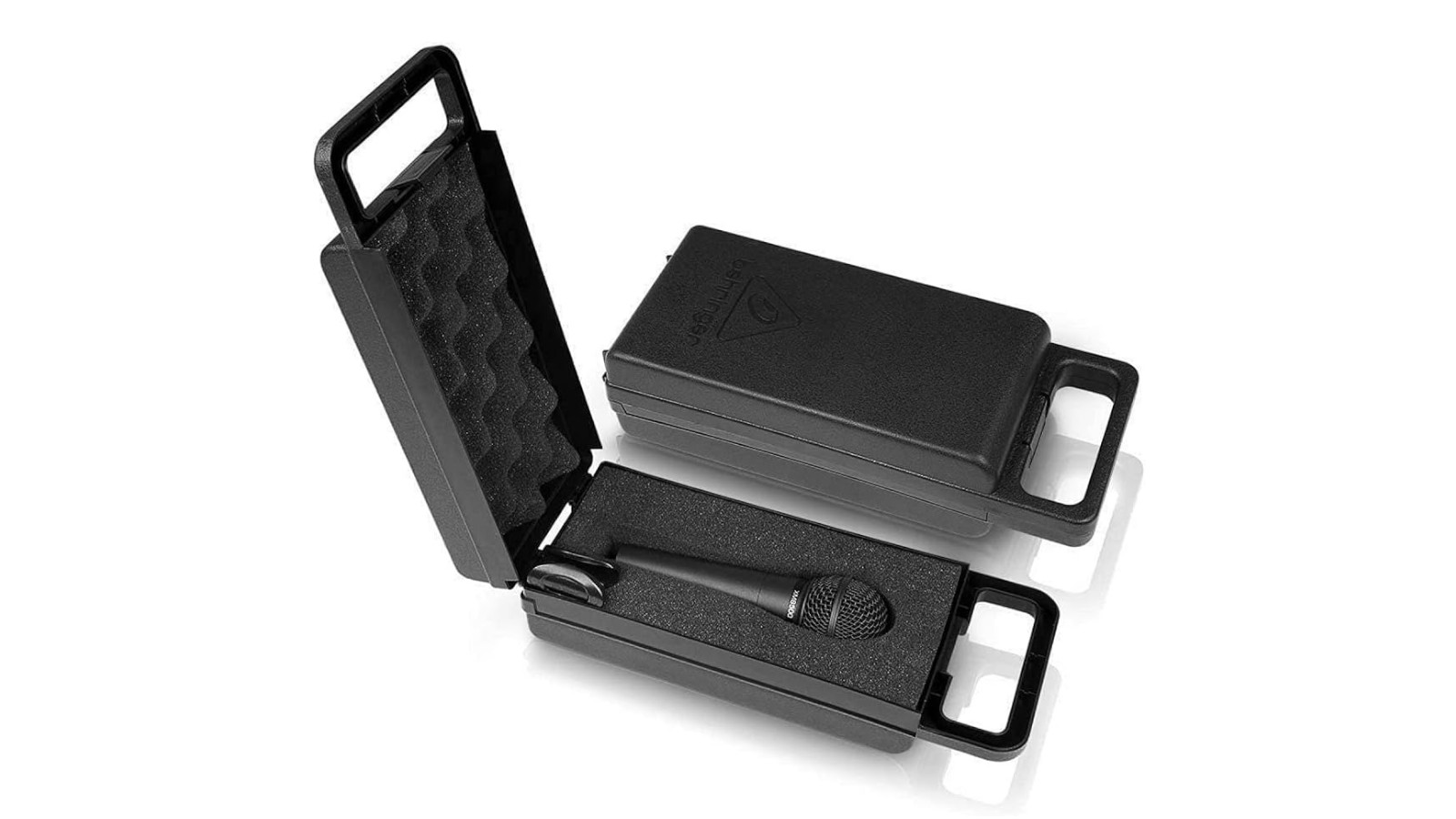
6. Behringer Ultravoice XM8500
Our expert review:
Specifications
Reasons to buy
Reasons to avoid
Behringer’s Ultravoice XM8500 is a dynamic microphone that offers excellent sound quality at an incredibly affordable price. Its cardioid pattern effectively rejects off-axis sounds, making it perfect for recording in noisy environments.
The microphone’s build quality is impressive, with a rugged metal body and a shock-mount system to reduce handling noise. This makes it an ideal choice for podcasters who need a reliable, high-quality mic that can take a few knocks.
More options...
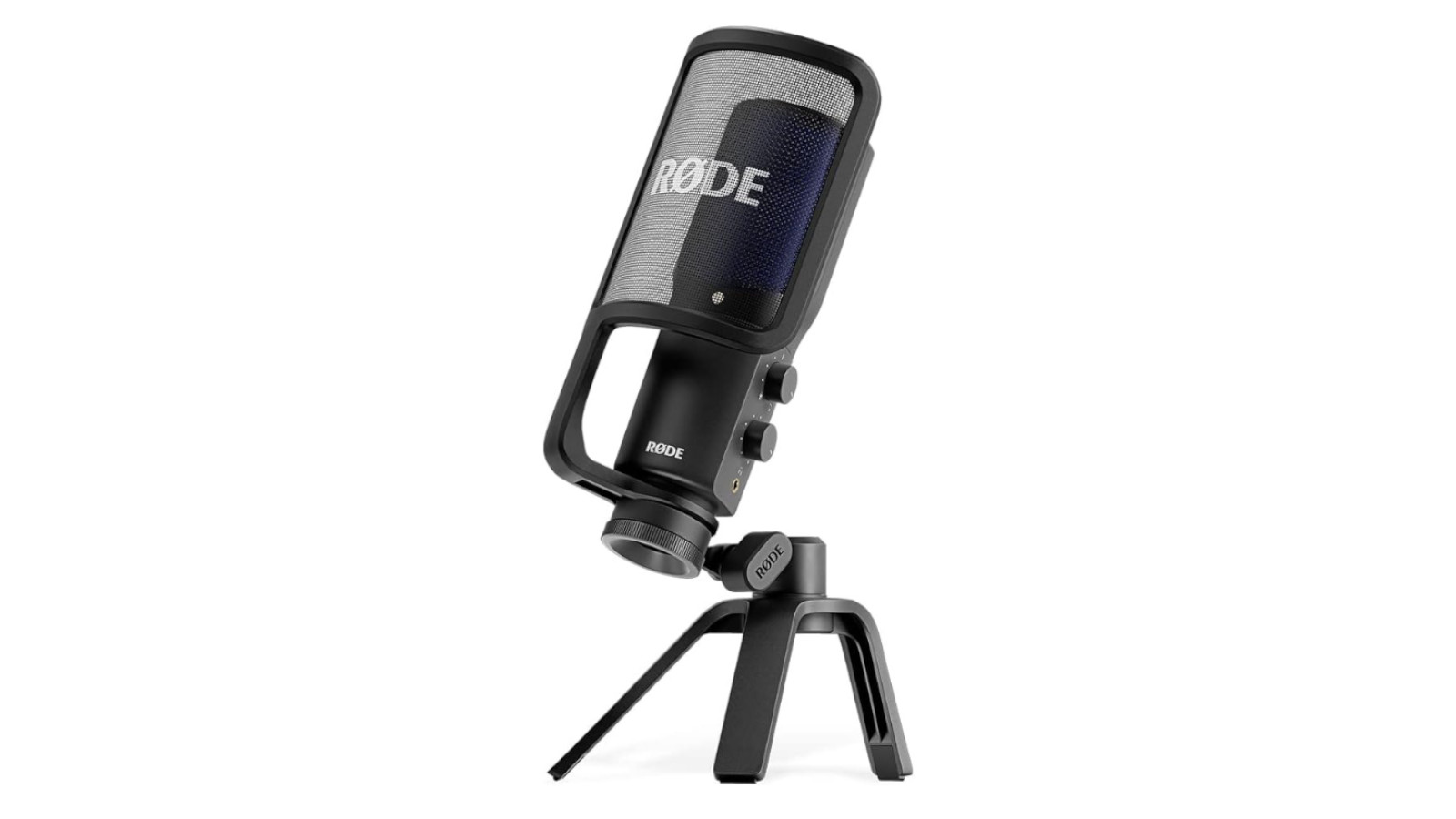
7. Rode NT-USB
Our expert review:
Specifications
Reasons to buy
Reasons to avoid
The Rode NT-USB is a highly acclaimed microphone that offers exceptional versatility and superior sound quality, making it a favorite among podcasters and vocalists alike. This condenser microphone features a smooth frequency response that enhances the clarity and warmth of vocal recordings, ensuring that every detail is captured with precision. Its cardioid polar pattern is designed to focus on sound sources directly in front of the microphone while minimizing background noise, making it ideal for podcasters who need to record in less than perfect acoustic environments.
The NT-USB's construction is robust, with a premium metal finish that not only looks professional but also provides durability. It includes an integrated pop filter to reduce plosives (like hard 'p', 'b', 't' sounds) and a high-quality stand mount with a desktop tripod, which helps to position the microphone correctly and reduce handling noise.
Ease of use is another significant advantage of the Rode NT-USB. It connects directly to a computer via USB, and is compatible with all mainstream recording applications on both Windows and Mac OS. The microphone also features a zero-latency stereo headphone monitoring jack, which allows you to monitor the microphone input in real-time, an essential feature for podcasters looking to achieve the best sound quality in their recordings. With its combination of plug-and-play functionality, professional-level audio performance, and sturdy design, the Rode NT-USB is an excellent choice for anyone looking to produce high-quality audio on a budget.
Read our full Rode NT-USB review
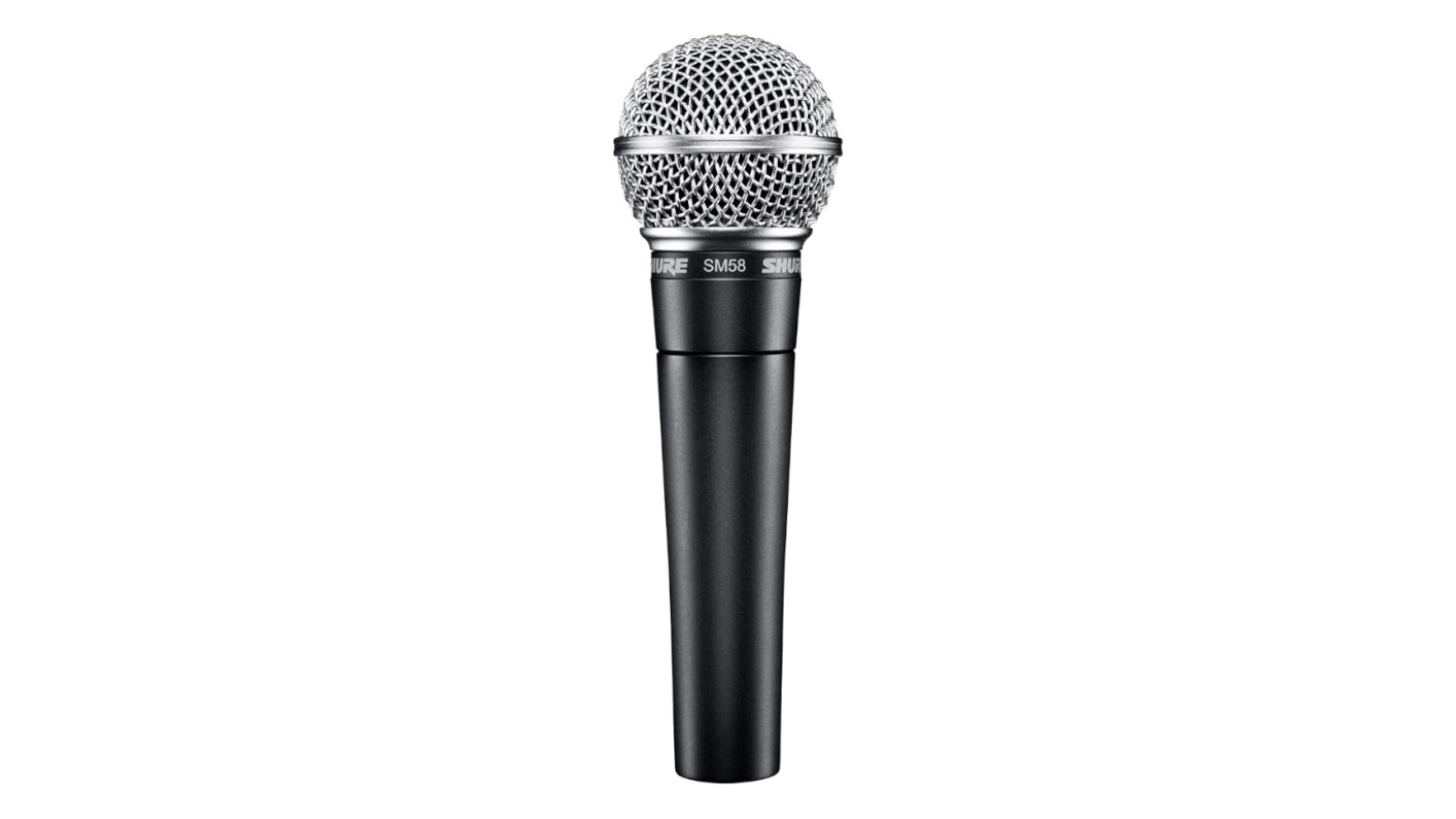
8. Shure SM58
Our expert review:
Specifications
Reasons to buy
Reasons to avoid
The Shure SM58 has been a favorite among audio professionals for decades, known for its durability and reliability. This dynamic microphone features a tailored vocal response for sound, which is a world standard for singing or speech.
A highly effective built-in spherical filter minimizes wind and breath "pop" noise, while the cardioid pickup pattern isolates the main sound source and minimizes unwanted background noise. The rugged construction is perfect for regular transport and rough handling.
Read our full Shure SM58 review
Best budget podcasting mics: Buying Advice

If you’re thinking of starting a podcast, or have already taken the first steps, you’ll know choosing the right microphone for podcasting is crucial. Your mic affects your voice, how clearly you’re heard, how professional you sound and how easy it is to produce high quality recordings. To help you understand some of the key things you should be looking for, we’ll explain some of the terminology, benefits and drawbacks of the podcast mic world.
Dynamic vs condenser
MusicRadar's got your back
There are two main microphone types you’ll come across when you’re looking at podcast mics. Dynamic microphones are generally known for their robustness and ability to handle high sound pressure levels. They are, however, less sensitive to sound nuances, which makes them ideal for recording in less controlled environments – a common scenario for many beginner podcasters. They are generally more affordable and durable, making them a solid choice for those just starting out.
Condenser microphones, on the other hand, are more sensitive to what’s being recorded, and capable of capturing a broader range of frequencies and nuances in sound. This sensitivity makes them preferable in studio settings where background noise can be minimised, and can deliver sparkling results. You’ll tend to find USB microphones, particularly those aimed at podcasters, will often (but not always) be condensers.
USB vs XLR microphones
USB microphones offer perhaps the simplest way to get into podcasting. They can be plugged directly into your computer, eliminating the need for an external audio interface or mixer and are a great choice for podcasters who prioritise convenience and portability over pristine sound quality. They are compatible with virtually any computer and are typically less expensive than their XLR counterparts.
In comparison, XLR microphones require an additional audio interface or mixer to connect to your computer, but can often offer better sound quality and more flexibility in terms of adjustments and enhancements, in line with the quality levels of the interface or mixer the signal travels through to reach your recording device. If you're planning to scale up your podcast with multiple hosts or high-quality sound requirements, investing in XLR microphones might be the better option for you.
Other considerations
As well as the above, there are a few other things to be aware of when looking at podcasting microphones. A mic’s polar pattern, for example, refers to how it captures sound, and from what direction. The most common polar pattern for podcasting is cardioid, which picks up sound from one direction and aims to minimise sounds from other directions. You might also find omnidirectional, figure-8 and hyper-cardioid options available, and some mics even offer a selection of them on the same device to suit the situation you’re in.
It’s worth considering compatibility too; if the mic you’re looking at is a USB mic, does it have the same USB connection cable as your laptop or PC? Does it work with your smartphone or tablet as well? Does it require drivers, or is it class compliant? These might seem small details, and are all fairly easily rectifiable, but it’s worth learning the basic functionality before you place an order.
How we choose

Here at MusicRadar, we are experts in our field, with many years of playing, creating and product testing between us. We live and breathe everything music gear related, and we draw on this knowledge and experience of using products in live, recording and rehearsal scenarios when selecting the products for our guides.
When choosing what we believe to be the best budget podcasting mics available right now, we combine our hands-on experience, user reviews and testimonies and engage in lengthy discussions with our editorial colleagues to reach a consensus about the top products in any given category.
First and foremost, we are musicians, and we want other players to find the right product for them. So we take into careful consideration everything from budget to feature set, ease of use and durability to come up with a list of what we can safely say are the best budget podcasting mics on the market right now.
Find out more about how we test music gear and services at MusicRadar.
Related buyer's guides
- Starting your own pod? You'll need one of the best podcast hosts
- Store more stuff with the best external hard drives for music production
- Listen in with the best studio headphones for all budgets
Get the MusicRadar Newsletter
Want all the hottest music and gear news, reviews, deals, features and more, direct to your inbox? Sign up here.
Chris Corfield is a journalist with over 12 years of experience writing for some of the music world's biggest brands including Orange Amplification, MusicRadar, Guitar World, Total Guitar and Dawsons Music. Chris loves getting nerdy about everything from guitar and bass gear, to synths, microphones, DJ gear and music production hardware.
